Status Report
Introduction:-
The Sub-Divisional Agriculture Office, Sohra has laid emphasis on more food grain production and put all effort to the challenges posed by the shrinking and degraded natural resources base and the climate change. There is also a demand need for directing our effort to achieve sustainability in agriculture by adopting new varieties of agriculture crops than can aclamatise to changed climate.
Better available technologies and scheme formulation that suitto the local conditions are made available and transferred to the farmers. Above all close observation, monitoring and evaluation is conducted to access the field results.
The famous Orchard growing area in the Sub-Division are Mawphu, Umblai and Nongsteng and neighbouring areas covering about 400-500 Hac (approximately). The Vegetables growing areas are mostly Laitkynsew and Lumwahkrem with an area of 100 Hac approximately. The famous local Tomato &cherrapunjee Pea of Laitkynsew and Lumwahkrem are really a pride to the Sub-Division as a whole. Other types of Vegetables are Lettuce, Mustard, Beet root, Carrot and etc.
State Scheme
a. Rice Development Scheme | ||
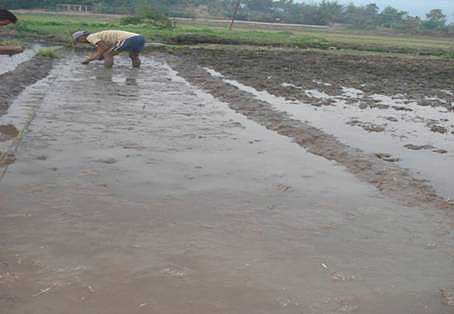 |
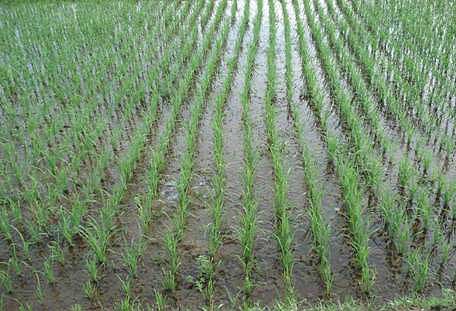 |
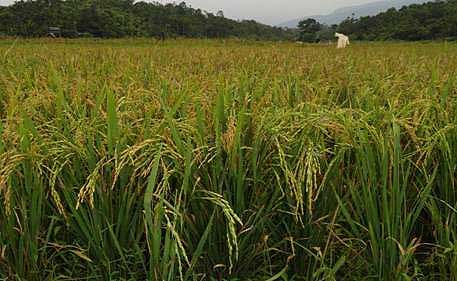 |
Farmer Ploughing the Flooded field and Transplanting the Seedlings. |
Vegetative Stage of transplantedBoro Paddy(Var- IR 36) |
The Paddy is ready for harvest |
| b. Maize Development Scheme | c. Winter Cropping Scheme |
d.Horticulture - Tuber Crop Development Scheme |
|
 |
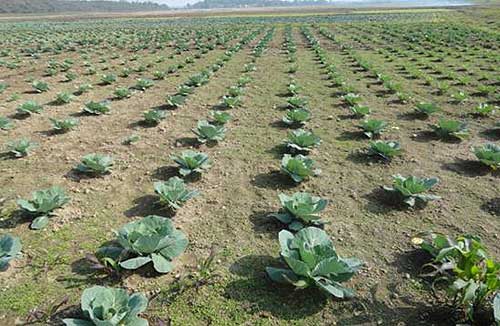 |
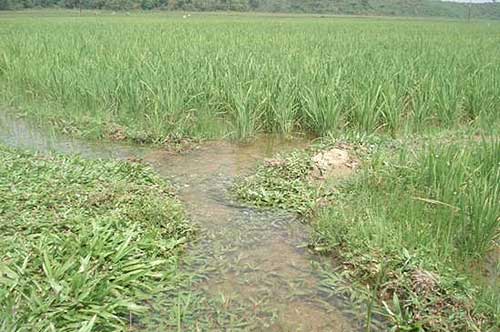 |
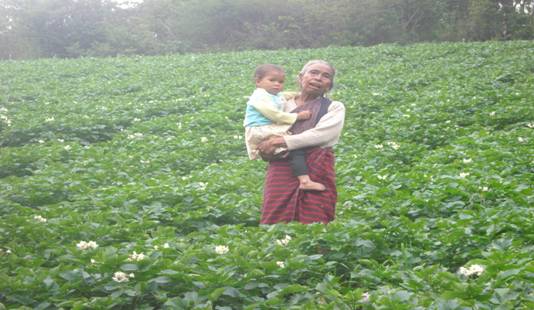 |
Rabi Maize Cultivation at Lubia (Vijay composite var) | Cabbage Cultivation irrigated by flooding water from Sluice Gate | Water Flooded from the Sluice Gate is utilized forBoro Paddy Cultivation at Lubia | A Registered Grower under Mawkdok Circle on Seed Potato Production |
Central Scheme
1. Agriculture
-
a. RKVY (RashtriyaKrishiVekyaYojana): The aim &objective of RKVY Scheme is to supply water to the field during winter season by means of check dams, sluice gates, surface water pumps and shallow tube wells. Before the implementation of RKVY, the cultivation of Boro Paddy (Spring Paddy) is negligible, but at present after intervention of RKVY the areais 100 ha.approx. The continuity of RKVY to provide irrigation facilities will bring more area under Boro Paddy cultivation and other Rabi crops cultivation to enhance crop production thus uplifting rural economy.
Some of the activities undertaken under RKVY (RashtriyaKrishiVekyaYojana) scheme |
||
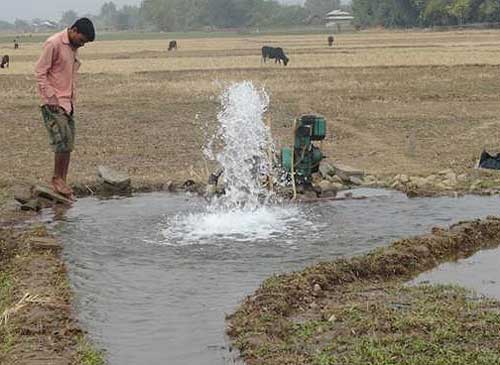 |
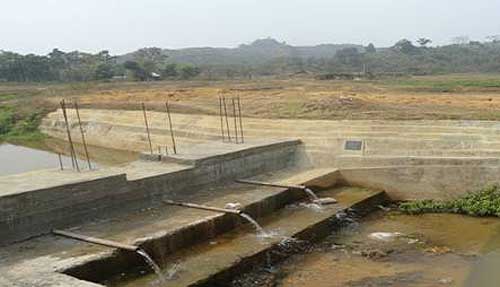 |
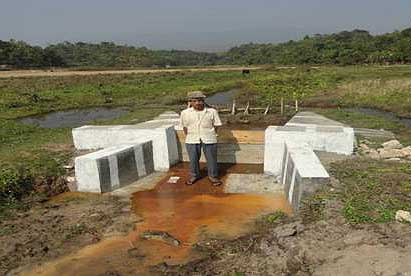 |
Shallow Tube Well installed at Kalatex. |
Check dam at Khahmalai |
Flooding of Water from the Sluice Gate at Umshaia |
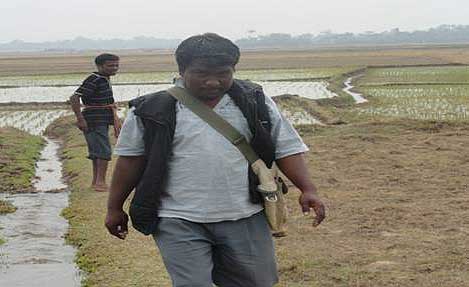 |
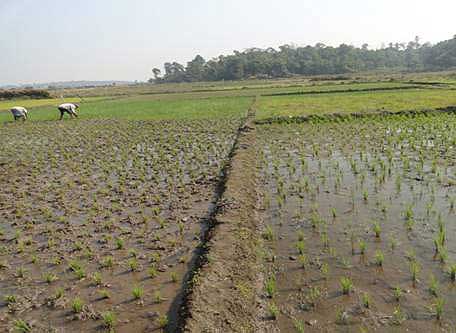 |
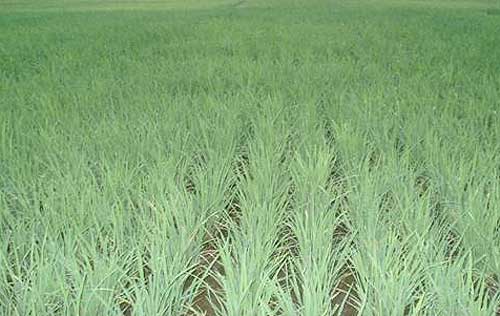 |
Pump out water used for Boro Paddy cultivation. |
First weeding, one month after transplanting of Boro Paddy
(Source of Water from Shallow Tube Well) | Tillering stage of Boro Paddy (above) |
-
b. N.W.D.P.R.A. (Watershed) Some of the activities undertaken under watershed scheme:
Some of the activities undertaken under watershed scheme: |
|
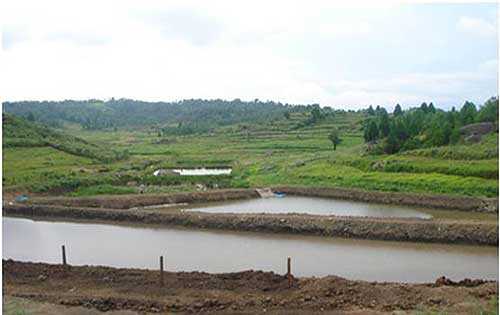 |
 |
Water harvesting cum Fishery Pond at Lumkyntung village under N.W.D.P.R.A |
PungShnongLaitmawsiang (Water Harvesting) |
2. Horticulture: H.M.N.E.H (Horticulture Mission for North Eastern States & Himalayan Region)
Success Story Of Citrus Cultivation & Rejuvenation Orange Trees At Umblai Village Under Shella Bholaganj Block :-The areas like Mawphu, Umblai, Nongsteng and all their adjoining areas have been considered as the main producers of oranges in Meghalaya for the last 15 years or so but the production has dropped down in the last 4-5 years due to senile orchard, climate change, attack of insect pests and diseases, lack of nutrients, loss of top soil and more importantly mismanagement and total negligence of the orchard. Most of the fruit trees required total rejuvenation.But with the coming up of centrally sponsored schemes like TMH and HMNEH, the purpose of rejuvenation of these orchard has been served. Shri.TelshonLyngdoh, 57 years, son of (L)Shri. L. Syiarlait, of Umblai Village under ShellaBholaganj Block, East Khasi Hills, a progressive farmer of Sohra, has a plot of land of more than 5 hectares at Umblai. He started orange cultivation on his own way back in 1970.He informed that his orchard had started showing a sign of decline in the last few years.But with the intervention of centrally sponsored schemes like TMH and HMNEH, he was provided with every input required for rejuvenation of his orchard.
The District Horticulture Officer, East Khasi Hills, Shillong,provided him with orange seedlings for gap filling,P.P.chemicals.P.P.equipments including footsprayer, and implements for canopy management like long reach pruner,pruning saw besides quick lime and copper sulphate for preparation of Bordeaux mixture and Bordeaux paste.
As informed by the beneficiary,the scheme proved to be very helpful and profitable as the rejuvenated trees started bearing normal fruits and have showed a sign of improvement in the last two years.
The beneficiary further informed that the production has improved in the last year which ultimately raised his income.As per his report,the following dates(approx.) are given:-
| 1 | Total No of Plants |
2350 |
| 2. | a. No of bearing trees (30 - 40 years aged) b. No of bearing trees (20 - 29 years aged) c. No. of bearing trees ( 9 -19 years aged) d. No of bearing trees (4 - 8 years aged) e. No of bearing trees (2 - 4 years aged) |
200 250 400 700 800 |
Success Story Of Citrus Cultivation |
||
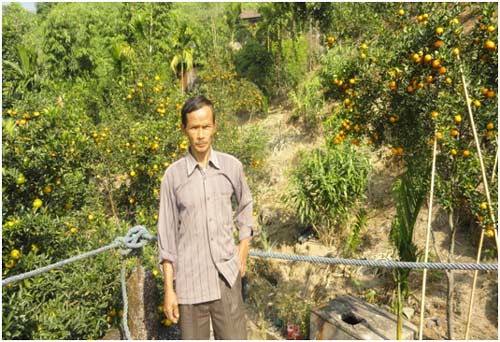 |
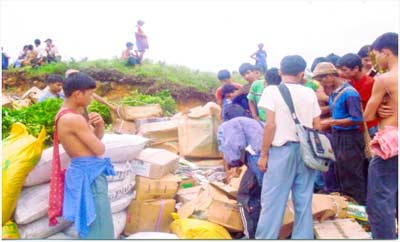 |
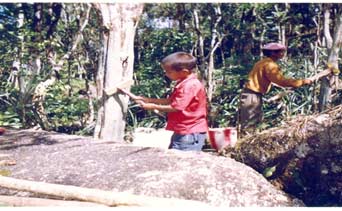 |
Shri.Telshon Lyngdoh,looking happy with his oranges |
Distribution of inputs |
Application of Bordeaux paste |
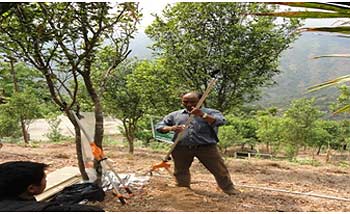 |
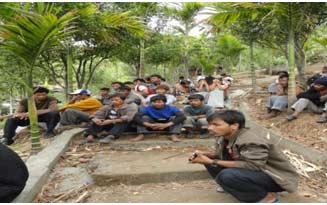 |
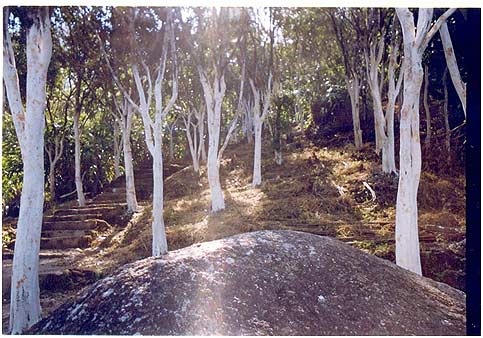 |
Demonstration of tools & implements for rejuvenation and canopy management |
Participants in the training programme held at Umblai |
View of his orchard after rejuvenation |
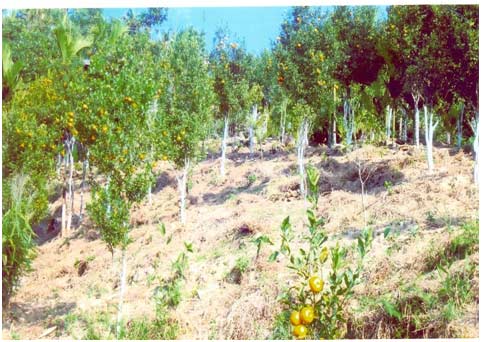 |
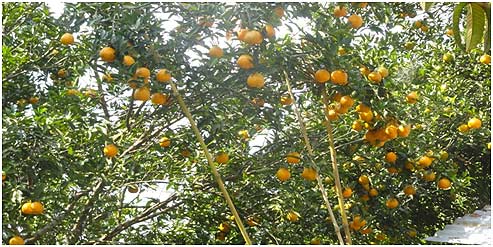 |
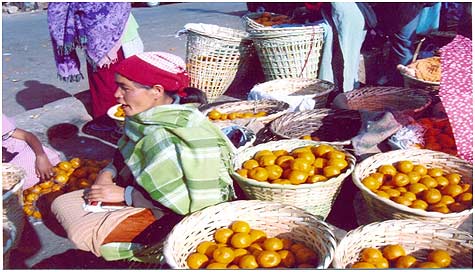 |
View of his orchard after rejuvenation |
Result of good work |
Oranges from umblai village at sohra market |
Success of Cabbage (hybrid) Cultivation at Lumwahkrem (Laitkynsew) under Sohra Sub-Division
Laitkynsew is one of the Villages in East Khasi Hills which has a great potential for vegetable cultivation. Located at 15 Kms from Sohra, Laitkynsew is well known for its organic farming of vegetables especially local Tomato. Since many decades back, farmers of this village have been taking vegetable cultivation as a mean of livelihood. Lumwahkrem is one of the locations underLaitkynsew where people earn and support their livelihood by growing and selling vegetables. Lumwahkrem comprises of about 30 farmers who are very dedicated and hard working.
With the introduction and intervention of TMH Scheme in the last few years and the coming up of HMNEH Scheme, it has really boosted the Vegetables cultivation in this area. ShriKynphamRapthap,41years, a bonafide farmer, is one of the beneficiaries under HMNEH Scheme 2009-10 for cabbage cultivation (Hybrid).The Office of the District Horticulture Officer, East Khasi Hills, Shillong supplied him with all the inputs required for cultivation besides technical support and guidance. Since the people of Sohra prefer and demand mostlyLaitkynsew vegetables, market is not a problem for the vegetable growers. His income has substantially increased which ultimately raised his standard of living.
Since all the inputs like seeds, organic manure etc were supplied by the Horticulture Officer, he had to spend only the labour charge for land preparation, Sowing, Transplanting, Intercultural operations, harvesting & packing which costs around 65% of the total investment.
As per his report and calculation,the followings are the cost of cultivation in brief and cost benefit ratio:-
|
Cost of cultivation for 1 Ha = * Around 35% of the cost of cultivation for seeds, organic manures etc. was assisted by the department Yield per Ha = 20 M.T Market Rate = ` 13/Kg Total Income = * 65% of the total cost of cultivation was borne by him = * His Net income = * Therefore the cost benefit ratio = 1:3 |
With the Net income of * he is committed to increase his acreage of land for other hybrid and open pollinated vegetables. With this success all the farmers in this area are looking & coming forward for technical and financial support from the department.
Cabbage (hybrid) Cultivation at Lumwahkrem (Laitkynsew) |
||
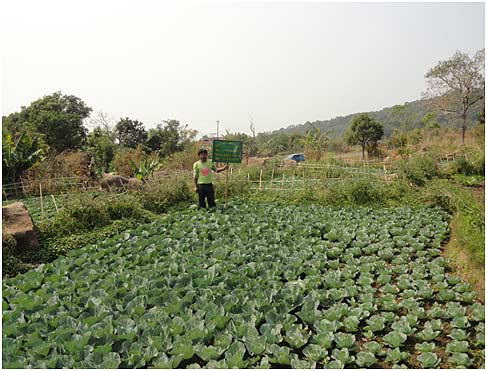 |
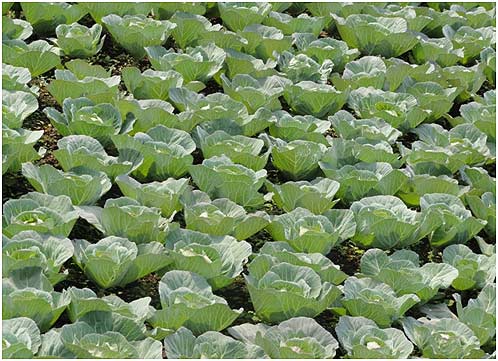 |
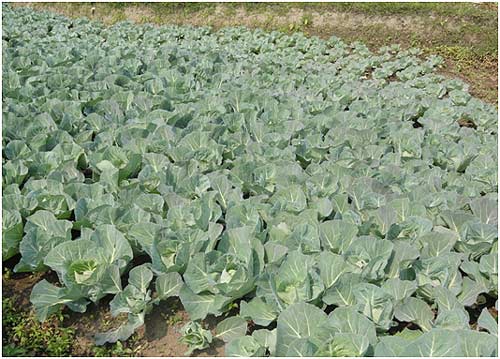 |
Shri Kynpham Rapthap a beneficiary under HMNEH Scheme 2009-10 of Cabbage and the view of his cultivation |
||
Water harvesting
Structure constructed at Shella,under Shella Bholaganj Block under H.M.N.E.H. scheme 2011-12/2r.:
Shella, located about 29 Kms from Sohra, was once very popular for growing and producing of sub-tropical crops like orange, arecanut, betel leaf, banana, pine apple etc. and was one of the main producers of these crops. But the production of these crops has dropped down in the last few years especially the production of orange and as reported by the farmers, the main contributing factor to the decline/low production of orange was scarcity of water besides other factors.
Shri.BidotPde, 44yrs, of Shella village and a bonafide farmer, has got a very good acreage of land measuring 3-4 hectares where he grows multi layered and mixed crops like arecanut, betel leaf, black pepper, orange, litchi etc.He planted about 500 Nos. of orange seedlings in 2007. As narrated by him, the orange trees were healthy in summer months but not in the dry months where so many symptoms occur like dry leaves & twigs, weak trunks & stems etc. He was very worried and decided to water/irrigate about 50 trees as a trial and what he found was that those 50 trees were very healthy and vigorous as compared to others, so he was convinced that water scarcity is the main contributing factor to the problem.
With the availability of scheme under H.M.N.E.H. 2012-13/2R, he was selected as one of the beneficiaries for construction of water harvesting structure. Now by having this facility, about 2-3 hectares of his horticultural lands can be irrigated during dry months which will ultimately raise crop production.
|
Total cost of construction including poly pipes etc = * Farmer’s contribution = * Government’s contribution = * |
Structure constructed at Shella , under H.M.N.E.H. scheme |
||
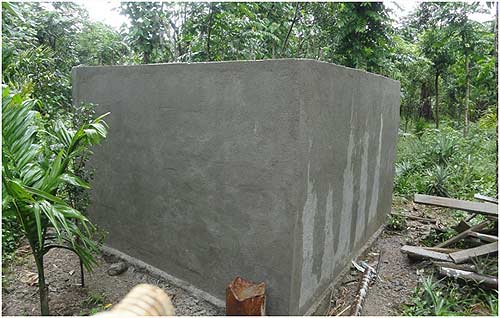 |
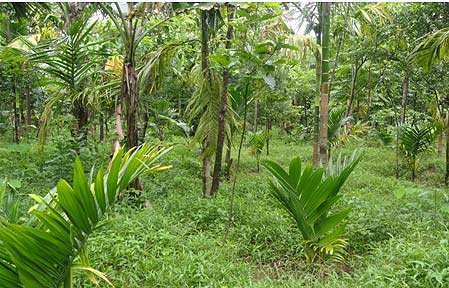 |
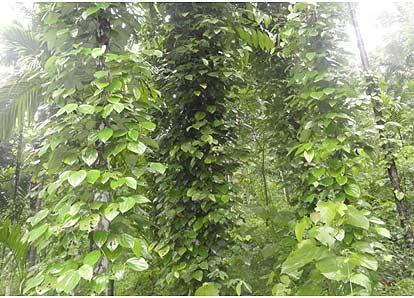 |
View of water tank |
Mixed Plantations To Be Irrigated |
Multi-Layered Crops To Be Irrigated |
Structure constructed at Nongwar, Sohra Sub-Division under H.M.N.E.H. Scheme 2011-12/1r.:
Nongwar is a small village located at about 20 kms from Sohra and about 74 kms away from Shillong. Till a few years back, farmers had to work very hard during the winter months to bring water to their fields as there were no irrigation facilities at all. With the introduction of H.M.N.E.H Scheme, the farmers now have some reason to smile about because they are given with some facilities where they can store, harvest and bring water to their fields.
Smt. Unity Donmon,a bonafide farmer, is one of the beneficiaries under H.M.N.E.H. Scheme 2011-12/1R for construction of water harvesting system.The scheme proved to be very helpful and problem solving as all the nearby low lying lands for growing off season vegetables etc. have been irrigated by polythene pipes which eradicate the water crisis and ultimately raised crops production. Now this water tank can cover about 3-4 hectares of land and benefited about 4-5 families.
Structure constructed at Nongwar, under H.M.N.E.H. Scheme |
||
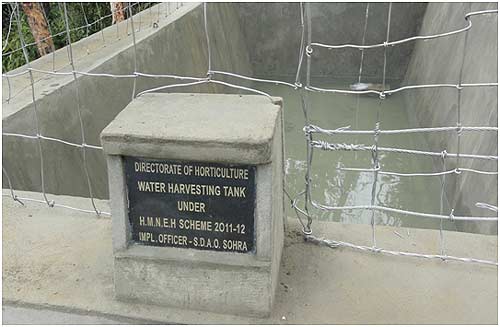 |
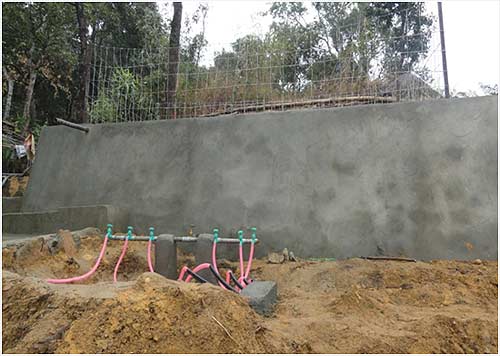 |
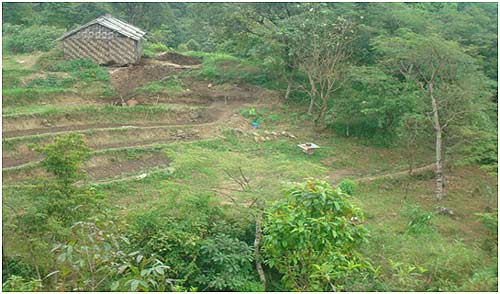 |
View of water tank |
Diversion Of Water By Means Of Polythene Pipes |
Low Lying Lands To Be Irrigated |
Structure constructed At Laittyra, Sohra Sub-Division under H.M.N.E.H. Scheme 2011-12/2r:
Laittyra is a small village located at about 12 kms from Sohra on the way to Shella. Sohra is wellknown as the wettest place on earth and gets the heaviest rainfall during summer months and most of the horticultural activities like vegetable cultivation etc.cannot withstand this high density rain and therefore,such activities are mainly practised during winter months.But the major problem that are facing by the farmers during dry season is scarcity of water in the field.With the introduction of central sponsored scheme like HMNEH,it has really served the purpose.
Shri.Bnai Lamin of Laittyra village and a bonafidefarmer, is one of the beneficiaries under H.M.N.E.H. Scheme 2011-12/2R for construction of water harvesting system.The source of water is around 500 mtrs and the water is conveyed by means of poly pipes to the water tankThe scheme proved to be very helpful and problem solving as all the nearby lands for growing off season vegetables etc.can now be irrigated during dry months which will ultimately raise crop production. Now this water tankcan irrigate about 3-4 hectares of land and benefited about 6-7 families.
|
Total cost of construction including intake/conveyance = * Government’s contribution= * Farmer’s contribution= * |
Structure constructed At Laittyra,under H.M.N.E.H. Scheme |
||
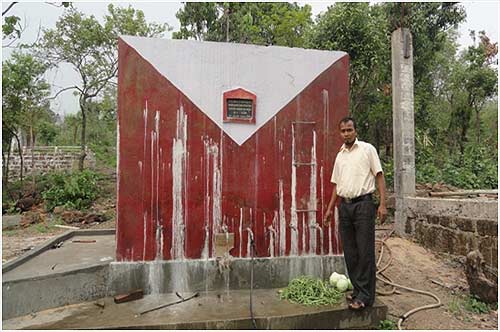 |
 |
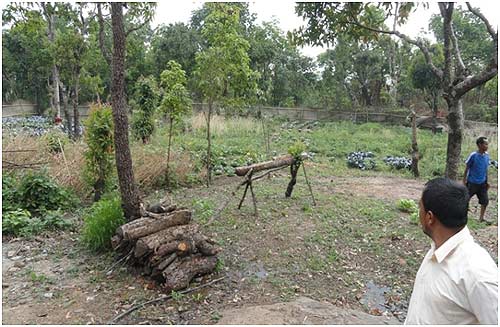 |
View of water tank |
Diversion Of Water |
Low Lying Lands To Be Irrigated |
Structure constructed At Nonglymba (Sohbar),Sohra Sub-Division under H.M.N.E.H. Scheme 2011-12/2r:
Nonglymba, located at the outskirt of Sohbar village was once very popular for growing and producing betel leaf and has been one of the main producers of betel nut and betel leaf. But in the last few years,farmers were reluctant to grow these crops mainly due to high cost of inputs,infestation of pests and diseases,water scarcity etc.
Shri.Nodri.S.Japang of Sohbar village and a bonafide farmer, is one of the beneficiaries under H.M.N.E.H. Scheme 2011-12/2R for construction of water harvesting system.The scheme proved to be very successful and beneficial as water scarcity has been the major problem in this area and by having this facility most of the farmers who have lands around this structure are now willing to revive betel leaf plantation besides areca nut and fruit plantations etc.Now all the nearby horticultural lands can be irrigated during dry months which will ultimately raise crop production. This water structure can irrigate about 6-8 hectares of land and will benefit about 10-12 families.
|
Total cost of construction including intake/conveyance = * Government’s contribution = * Farmer’s contribution = * |
Structure constructed At Nonglymba (Sohbar), under H.M.N.E.H. Scheme |
||
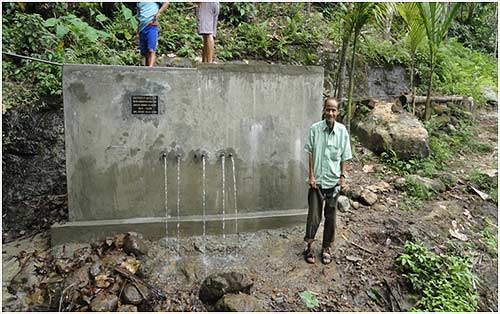 |
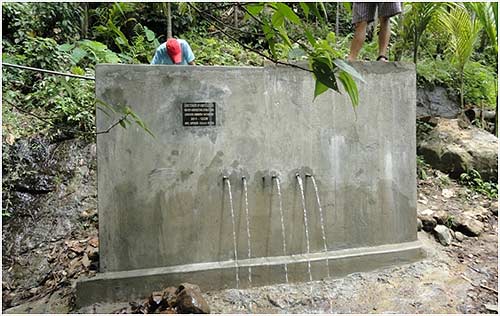 |
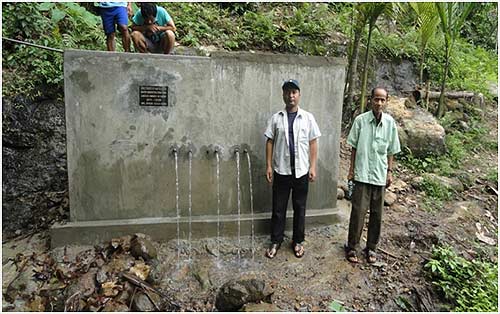 |
View of water tank |
Diversion Of Water |
Shri. S. Lyngskor,Sirdar,Sohbar sirdarship with Shri.N.Japang |
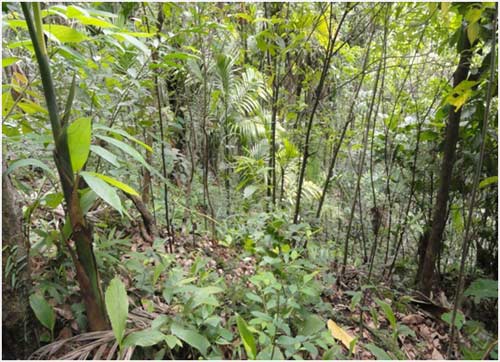 |
 |
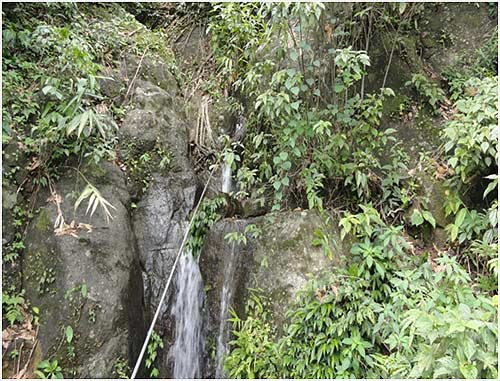 |
Site For Betel Leaf Plantation |
View Of Lands With Areca nut Plantations To Be Irrigated |
Source From Where Water Is Taken
|
Construction of Vermicompost unit at Lumwahkrem under the scheme Organic Manure (Hort) 2009-10.
Name of beneficiary: - Shri. Larsing Khyllep.
Address / Location: - Laitkynsew / Lumwahkrem.
Block: - Shella Bholaganj Block.
District: - East Khasi Hills.
Cost: - *
Located about 15Kms from Sohra,Laitkynsew is one of the villages in East Khasi Hills where farmers are very reluctant to use any type of chemical and using only organic manures.Therefore,setting up and construction of vermicompost unit in this area is a necessity.
Shri.LarsingKhyllep, 52 years, a progressive vegetable farmer of sohra was the beneficiary under the scheme Organic manure (Hort) 2009-10 for construction of vermicompost unit. He constructed the vermi compost unit at his own field at Lumwahkrem. During the 1st year the production was 1.2 M.T. During 2nd year production was increased to 1.8 M.T.Since he has got a big acreage of land, all the vermi compost was used for his own requirement only. He expects to produce around 2M.T by the 3rd year.
The success of Shri.LarsingKhyllep has drawn the attention of his neighbours and some of the farmers started constructing small units on their own.
Construction of Vermicompost unit at Lumwahkrem under the scheme Organic Manure (Hort) |
||
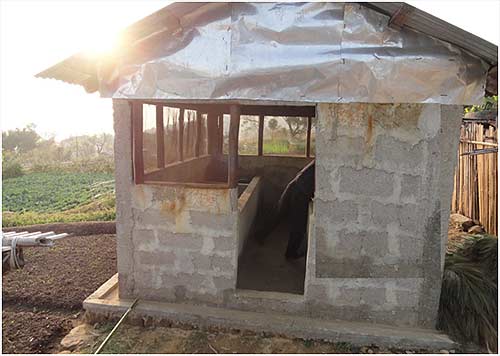 |
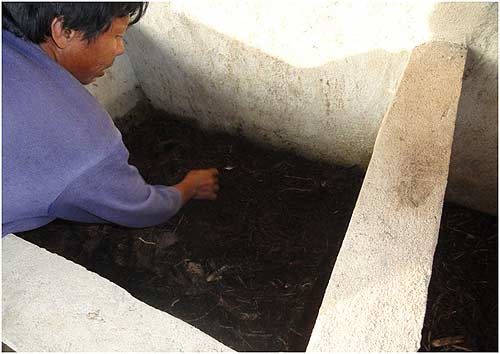 |
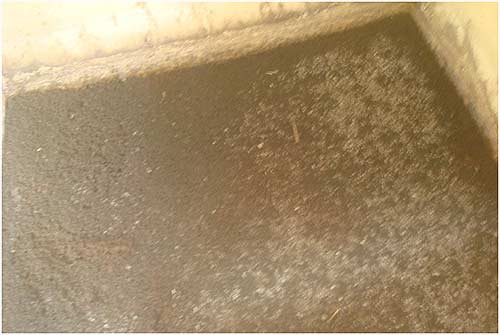 |
Outside View Of Vermicompost Unit |
Tending to compost |
Vermicompost Ready For Harvesting |
Success Story
Private Nursery At Lummuri Under Sohra Sub-Division:
Shri Paskha Dohling,43 years, son of (L) Shri. D. Thawpaw, of Umwai Village in East Khasi Hills under ShellaBholaganj Block, a progressive farmer of Sohra, has a plot of land of more than 3 hectares at Lummuri. Through the financial and technical assistance from the Department under TMH Scheme 2006-07 (3R), he started a private nursery for sub-tropical crops like Orange, Pine apple, banana, arecanut, black pepper etc. The District Horticulture Officer, East Khasi Hills, Shillong, through the Sub-Divisional Agricultural Officer, Sohra, released financial assistance of ` 3,00,000/- in 3 instalments for setting up of the nursery. Out of this amount, he spent 70% on land development, fencing, drip irrigation etc and 30% on seed production and purchase of seedlings. All the labour charges were borne by himself. The areas like Shella, Saikarap, Lummuri, Jatap, Diengrai etc. and all their adjoining areas were once considered as the main producers of Oranges and other sub-tropical fruits in Meghalaya but now there is hardly any orchard in this area and this has prompted and inspired Shri P. Dohling to set up a nursery in order to revive the lost glory of Shella.
His nursery was approved by the Director of Horticulture,Meghalaya,Shillong to supply seedlings like Orange, Banana, Satkura, Pine apple suckers, Black Pepper cuttings etc as per Government rate.
In the first year he was able to sell 4000 Nos. Orange seedlings 10, 000 Nos.Pine apple suckers, 3000 Arecant seedlings and 2000 Banana suckers. In the 2nd Year, it was increased and could sell around 10, 000 Nos. Orange seedlings, 4000 Rough lemon seedlings, 6500 Black pepper cuttings, 18000 Pine apple suckers, 7500 Arecanut seedlings and 4000 Banana suckers.
As per field inspection, it was found that seedlings are vigorous and healthy. The stock position of his nursery for the year 2011-12 is as follow:-
-
Orange Seedling (Poly) = 10, 000 Nos.
-
Black Pepper cuttings (Poly) = 8, 500 Nos.
-
Pine apple = 18, 000 Nos.
-
Arecanut = 10, 000 Nos.
-
Banana Suckers = 3, 500 Nos.
The nursery is situated in the heart of the citrus growing areas of Shella which is easily communicable by road. Therefore, having a nursery nearby, it is really a blessing for the farmers in this area.
His expected income this year is * with the net income of around * With the expected net income he is planning to expand his nursery by raising more and more seedlings so as to cater to the needs and requirements of the farmers of Shella and the whole District of East Khasi Hills.
Private Nursery At Lummuri |
||
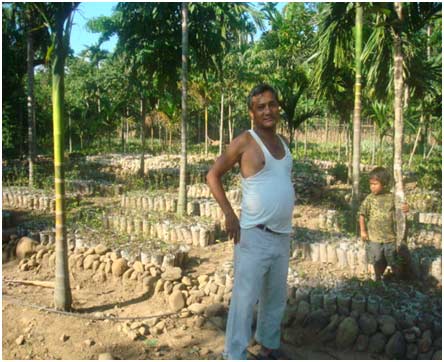 |
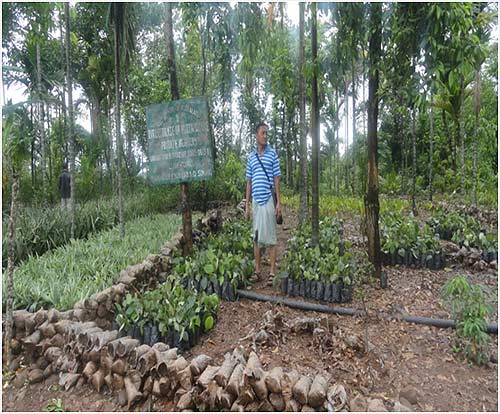 |
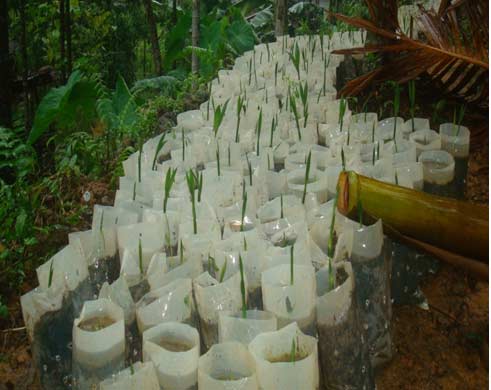 |
Shri Paskha Dohling At His Nursery |
Arecanut Seedlings- Germinating Stage |
|
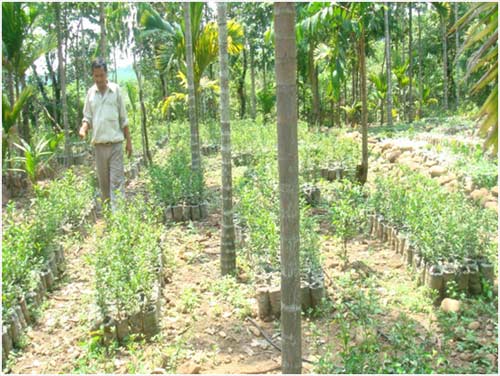 |
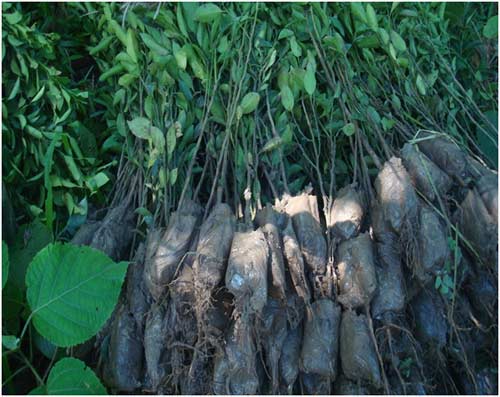 |
 |
Tending to his Nursery |
Orange seedlings sold out from his nursery |
Pine apple crowns & Black pepper cuttings |
Farming practices by the locals:
-
Paddy:- Earlier the local farmers adopt the broad casting method of paddy cultivation where no specific spacing is maintained. In this method the cost of cultivation and the yield per hectare is less.
But after conducting of demonstrations, the farmers realized that by transplanting or line sowing, the yield is high though cost of cultivation is higher.
Now the farmers adopt only the transplanting method of rice cultivation.
-
Citrus (Orange)-Propagated by seeds.
-
Pineapple- Propagated by suckers and crowns.
-
Potato- Propagated by tubers.
Ecological degradation:
Mining may affect Agricultural land due to leaching of acids,but so far no study has been conducted on the effect of mining on agriculture.
Farm Machanization
Farm Mechanization plays a very vital role for vigorous agriculture growth in plain areas of the Sub-Division. So far the Department of Agriculture has granted 30 power tillers, 10 power reapers and 10 rice millers in 2012-13. Understanding the cost of benefit ratio of ploughing the land by modern mechanization, many farmers have come forward to apply for these Farm Machineries at subsidized rate.
Farm Machanization |
||
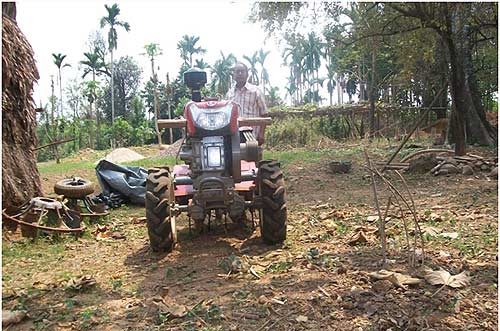 |
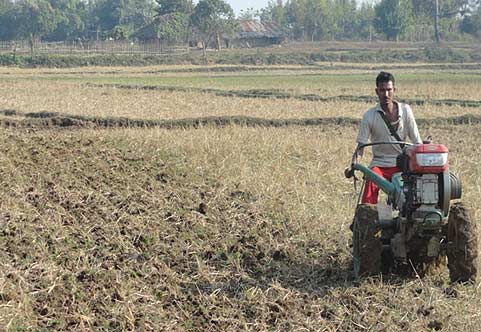 |
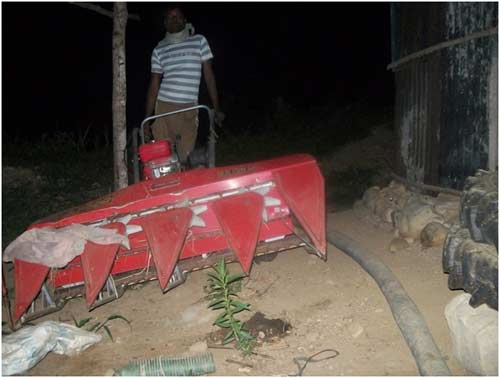 |
Power Tiller at Patharghat |
Field preparation for Boro Paddy at Kalatek. |
Power Reaper at Khahmohi |
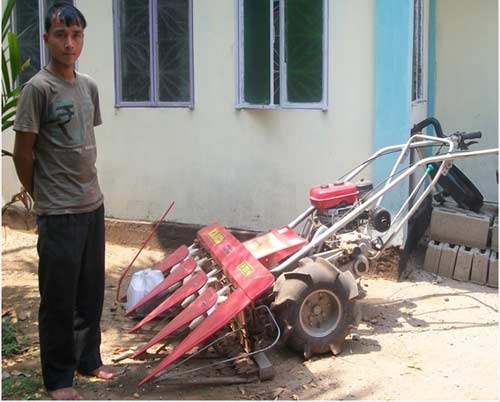 |
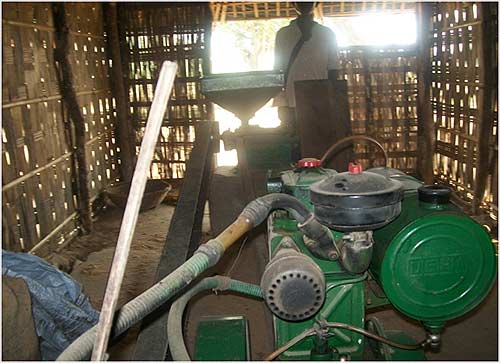 |
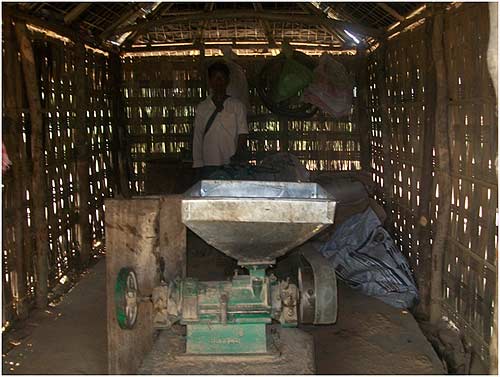 |
Power Reaper at Umdoh Shella |
Rice Mill at Jatap |
Rice Mill at Sohlap |
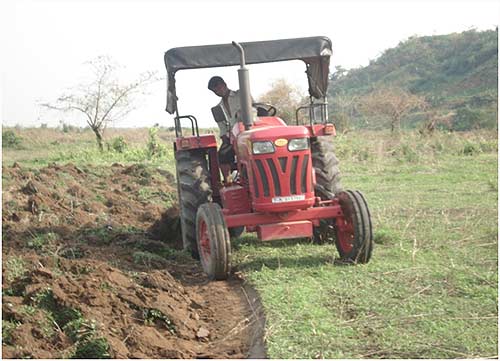 |
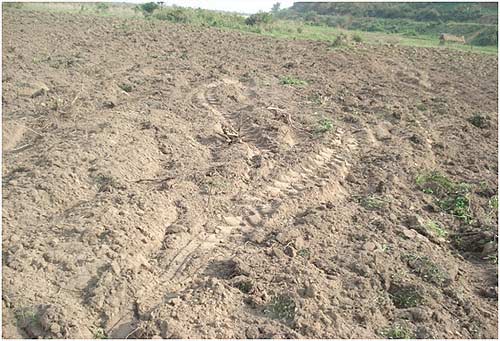 |
 |
Primary and Secondery Tillage Operation by a Tractor at Bri Sohlwa Shella. |
Soil Clod pulverized by a Tractor |
Land Reclaimation at Kalatek Shella |
* Detailed information ma ybe acquired from the concerned Office.
Visitor No.:
Updated on 27-01-2017
